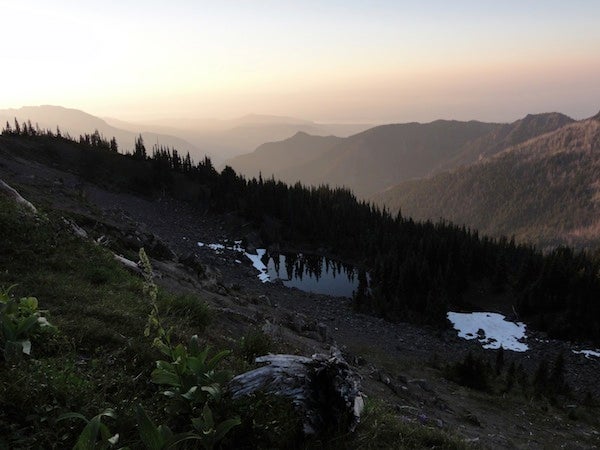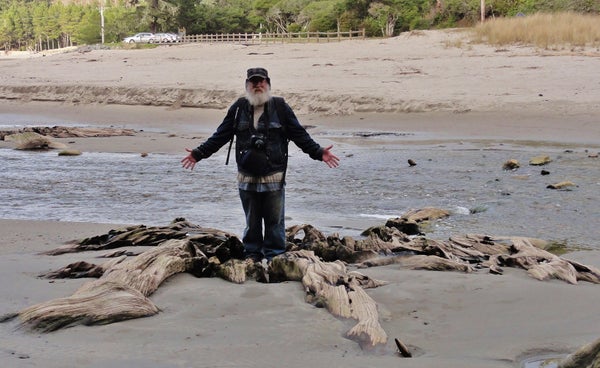This article was published in Scientific American’s former blog network and reflects the views of the author, not necessarily those of Scientific American
I can stare into the mouth of Mount St. Helens without flinching, begging her to erupt. I can hike up river valleys draining Mount Rainier, and just make a mental note to scramble uphill if it sounds like a mudslide’s coming. I’ve tramped around Mount Baker without once worrying about the fact it’s active. Volcanoes don’t scare me a bit. Okay, I lie, they scare me a wee bit, just enough that I have a healthy respect for their power and refuse to buy property in their hazard zones.
Where I go all white-knuckle and stark terror is on Seattle’s few double-decker roads. Whenever I have to take the southbound I-5 express lanes, I’m staring up at the freeway above, and out toward the Cascadia subduction zone off the coast, and begging it to please oh please not choose this particular instant to rip. Whenever I’m on the coast, the first thing I’m looking for is the quickest route to high ground. See, I know that the Cascadia subduction zone is prone to enormous earthquakes, much like the one that devastated an appreciable chunk of Japan in 2011, and I also know that earthquakes don’t give any warning before they hit. One instant, you’re going about life as usual. The next, the ground is shaking, things are falling, and there’s nothing you can do but ride it out. Well, there’s plenty of safety tips you can follow. But I much prefer volcanoes, which generally give more notice. Also, those generally don't sink the coastline several feet.
.jpg?w=600)
Lockwood stands on the stump of a gigantic spruce tree at Sunset Bay, Oregon. It was killed more than 1,000 years ago when a massive subduction zone quake dropped the coastline and drowned the forest.
On supporting science journalism
If you're enjoying this article, consider supporting our award-winning journalism by subscribing. By purchasing a subscription you are helping to ensure the future of impactful stories about the discoveries and ideas shaping our world today.
Cascadia terrifies me, people. The idea of it reduces me to a quivering mass of gibbering dread if I allow my thoughts to dwell upon it too long. So I’m glad it’s other people’s jobs to dwell. And they’ve got great news for us! The west coast won’t quite be toast. Our emergency planners are all, we’ve got this.
But if [the recent New Yorker article] has anyone thinking of relocating to another part of the country, you might not want to book the moving van just yet. The region is not “overdue” for a megaquake, geologists at the Earthquake Science Center in Seattle said. It almost certainly won’t be as devastating as portrayed in the article, which suggests everything west of Interstate 5 “will be toast.”
A tsunami will not wipe out Seattle and Tacoma, and buildings constructed since 1995 have strong quake-resistant features. It will be bad, but it won’t catch the Northwest unawares, said Art Frankel, a geologist for the U.S. Geological Survey.
“There’s been lots of preparation done,” he said.
Are you curious about Cascadia? Certain everyone in the Pacific Northwest is gonna die? Then this is the article you should read. The upshot: yep, it’s gonna be very, very bad. But lots of sensible people have been putting a lot of effort into hardening the target and ensuring there’s a solid disaster response plan in place, so it’s not going to be west-coast ending when it happens. We’ll get through this, together.
And hey, the reason I live here is because it’s possible this won’t happen in our lifetimes at all. The megaquake could happen this second. Nope, maybe this second. Okay, maybe it’ll happen tomorrow, or next month, or years from now, but it could also easily not happen for many generations. I’m actually more worried about anthropogenic climate change on a daily basis than I am the Cascadia earthquake, because climate change is happening right now. I mean, our temperate rainforest is on fire right now. A rainforest, people. Burning down. Cascadia will cause us some immediate agony and several years’ worth of expensive rebuilding, but all the carbon we’ve pumped into the atmosphere is going to cause us serious problems for the rest of our lives.
So, yes. We in the Pacific Northwest must prepare just in case the full rip-nine happens. Goodness knows it’s good sense – we’ve got plenty of faults around here other than Cascadia, so we’ve got more than one reason to harden our seismic targets.
Want more Cascadia? The Pacific Northwest Seismic Network has more! If you’re going to be near the University of Oregon tomorrow, you can swing by at 7pm Pacific time for the public forum. It’ll also be streaming live here. For those who loves them their Twitter hashtags, they’ll be tweeting using #TheReallyBigOne. And for ongoing adventure, you can explore the subduction zone with Garry Hayes. Come for the gorgeous photos, stay for the exciting geology! You’ll have to endure some geological humor along the way, but you’ll see just why so many millions of people are willing to tolerate the risk – this coast is one of the most beautiful places on earth!

Tarn Near Sunset, Hurricane Hill, Olympic Mountains
